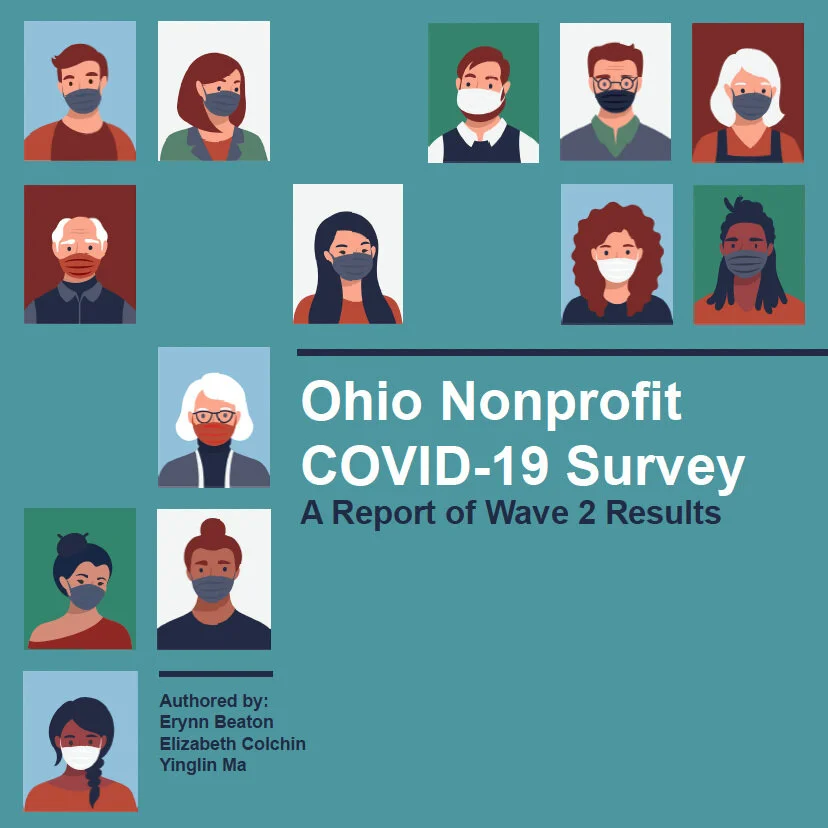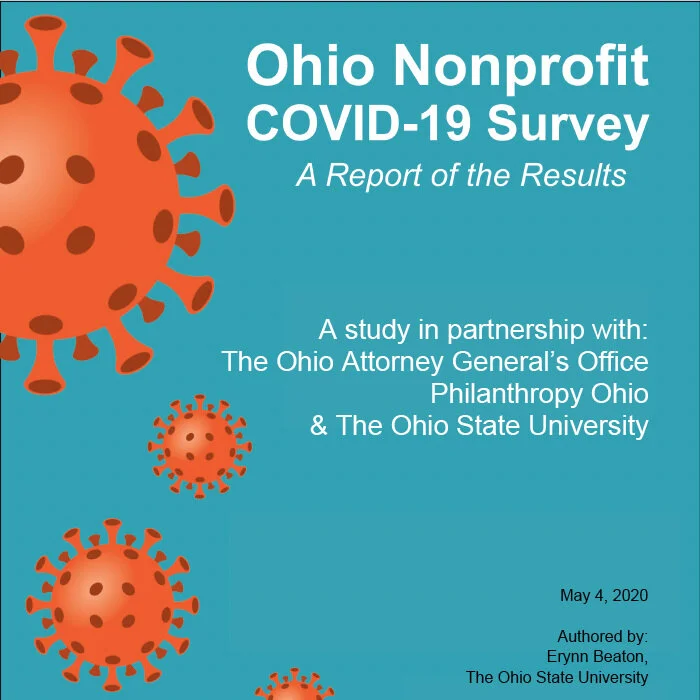
Research
Peer Reviewed Articles
-
Programming Change Among Nonprofit Human Service Organizations During the COVID-19 Pandemic
Ma, Y. & Beaton, E.E. (2023). Human Services Program Adaptation and Change During the Pandemic, Human Services Organizations: Management Leadership and Governance. https://doi.org/10.1080/23303131.2023.2228854
Research shows that nonprofit human service organizations are nimble in times of crisis. The surprising nature of the pandemic posed unique challenges to both the supply and demand sides of the human service sector. One way that nonprofit human service organizations responded to the pandemic environment was through programming change, including adding new programs, serving new populations, and discontinuing previous programs. Drawing from a two-wave statewide survey, our results indicate that a sizable proportion of nonprofit human service organizations engaged in these changes within the first five months of the pandemic. Such decisions were associated with both resource and mission considerations. Extant research shows how strategic change made in response to environmental shifts often leaves an imprint on organizations. As such, pandemic-era programming change may have a lasting impact on the human service sector, further evidenced by leaders’ intentions to sustain them in the years to come.
PRACTICE POINTS
1. The COVID-19 pandemic has forced a number of nonprofit human service organizations (NHSOs) to change their programming. Many NHSOs added programs, added new service populations, and discontinued programs.
2. NHSOs seem to have balanced resource and client needs as they enacted programming change, but as pandemic resources wane NHSOs will need to change further.
3. Programming change enacted during the pandemic was intended to persist after the pandemic ends. This may exert a toll as NHSOs recognize that the pandemic has required them to increase their programming load. -
Sexual Harassment Policies in Nonprofits
Ma, Y., Beaton, E.E., & Bhati, A. (2022). Sexual Harassment Policies in Nonprofits, Nonprofit Management & Leadership, 33(2), 411-426. https://doi.org/10.1002/nml.21526
ABSTRACT: The nonprofit sector strives to be a virtuous and transparent space, one that is diverse, inclusive, and welcoming. Still, inappropriate and exclusionary behaviors can and do occur in nonprofits—one of which is sexual harassment (SXH). Currently, little research on SXH in the nonprofit sector exists, and even less is known about the steps taken by nonprofits to protect their employees and stakeholders from SXH. This study examines rates of SXH policy adoption among nonprofits and the relationship between SXH policy adoption and organizational characteristics. Drawing from a state-wide survey, we find that there is wide variation among nonprofits in their adoption of a written SXH policy. Organizations that have full-time employees, more revenue, and greater capacity are more likely to have a policy. Organizations that serve women are no more likely to have a policy; however, lesbian, gay, bisexual, and transgender-serving organizations are more likely to have a policy. We discuss the implications of these results, including the conceptualization of SXH as part of the broader issues of discrimination, harassment, and bullying in nonprofits.
-
A Review of Sexual Harassment Prevention Practices: Toward a Nonprofit Research Agenda
Beaton, E. E., LePere-Schloop, M., & Smith, R. (2021). A Review of Sexual Harassment Prevention Practices: Toward a Nonprofit Research Agenda. Nonprofit and Voluntary Sector Quarterly, 51(4), 617-633. https://doi.org/10.1177/08997640211008979
ABSTRACT: Sexual harassment has garnered renewed attention with a wave of allegations against high profile men, including nonprofit executives. Given its legal, organizational, and ethical implications for nonprofit organizations and the sector, it is imperative that nonprofits take steps to prevent sexual harassment. Because there is limited research on sexual harassment in the nonprofit literature, we know little about what nonprofits are doing, or what they should be doing. This research note uses qualitative analysis to explore the anti-harassment practices recommended to nonprofit practitioners and compares these practices to academic research to develop a nonprofit scholarly research agenda. We identify a series of important questions nonprofit scholars could pursue to improve our knowledge of the issue and contribute to both research and practice.
-
Ethnography: Tales of the Nonprofit Field
Beaton, E. E. (2021). Ethnography: Tales of the Nonprofit Field. VOLUNTAS: International Journal of Voluntary and Nonprofit Organizations. https://doi.org/10.1007/s11266-021-00394-y
ABSTRACT: Ethnography is a rich research tradition originating from sociocultural anthropology that aims to vividly represent cultural meaning through fieldwork and thick description. Ethnographic fieldwork is known for unearthing surprises, and ethnographers are often convinced that, had they used another approach, they would have been unable to explain fully what was going on in the research setting. Ethnography in nonprofit studies is increasing, but sparse. This article argues that introducing more tales of the nonprofit field could deepen the analysis of how nonprofit organizing works, bridge the nonprofit research–practice divide, challenge the Western ethnocentricity of nonprofit studies, bring the sector’s periphery to the forefront and enhance nonprofit management education. However, to benefit from ethnographic work, the nonprofit field must embrace alternative norms of composition and rigor. The starting point is conversation and community among nonprofit ethnographers to foster such work.
-
“Whatever it Takes”: Sexual Harassment in the Context of Resource Dependence
Beaton, E. E., LePere-Schloop, M., & Smith, R. (2021). “Whatever it Takes”: Sexual Harassment in the Context of Resource Dependence. Journal of Public Administration Research and Theory, 31(4), 617–633. https://doi.org/10.1093/jopart/muab005
ABSTRACT: Research suggests powerful resource dependencies are present in the public and nonprofit sectors. The individuals operating at the nexus between organizations and resource providers, and who mitigate dependencies, are referred to as boundary spanners. Research suggests that there may be both positive and negative personal repercussions for boundary spanners, but research has not sufficiently examined these unintended consequences through a gender lens. Bringing together research on resource dependence and sexual harassment, this study explores sexual harassment as an unintended consequence for boundary spanners of resource dependence mitigation strategies. Drawing on a feminist methodology and purposive sampling, we engaged in interviews with 36 professional fundraisers, a quintessential boundary spanning role, to examine the problem of sexual harassment by donors. These experiences leave fundraisers feeling harassed by donors and exploited by employers that pressure them to do “whatever it takes” to obtain donations. We contribute to research on resource dependence by surfacing sexual harassment and exploitation as unintended consequences for boundary spanners of strategies to mitigate organizational resource dependence. Our findings assist in reconsidering the assumptions that underly resource dependence theory and related research.
-
Institutional Leadership: Maintaining Mission Integrity in the Era of Managerialism
Beaton, E.E. (2021). Institutional Leadership: Maintaining Mission Integrity in the Era of Managerialism. Nonprofit Management & Leadership, 32, 55–77. https://doi.org/10.1002/nml.21460
ABSTRACT: Today, nonprofit leaders operate in a context of blurred boundaries between the nonprofit and for-profit sectors, prompting them to engage in managerialism. Managerialism has advantages but is also among the many sources of mission drift. Philip Selznick once proposed a style of leadership, called institutional leadership, that directly addresses the risk of mission drift. Despite the importance of institutional leadership in today's era of managerialism, the concept has been underexamined in the literature. Through ethnographic fieldwork with a cohort of nonprofit leaders, I develop a framework of practices leaders can use to maintain mission integrity. My findings reveal that institutional leadership can be a collective endeavor enacted not only by the board and executives but also by staff and other stakeholders. To prevent mission drift, leaders in the study used practices related to mission reflexivity, involvement gatekeeping, enabling stakeholders, building constraints, and encouraging resistance.
-
The Lived Experience of Managerialization: Understanding Values Conflict in Non-profits through a Pragmatic Institutionalism
Beaton, E.E., Foster, P., & DeJordy, R. (2021). The Lived Experience of Managerialization: Understanding Values Conflict in Non-profits through a Pragmatic Institutionalism. Journal of Management Studies, 58(6), 1471-1506. https://doi.org/10.1111/joms.12661
ABSTRACT: Non-profit organizations are increasingly adopting business practices, an institutional phenomenon called managerialization. Sometimes those business practices cause conflict with, or drift from, the non-profit’s mission. We investigate the micro-foundations of this phenomenon by focusing attention on the lived experiences of organization members and advancing a pragmatic institutionalism. Empirically, we explore how managerialization is experienced in a contemporary non-profit, the Promenade Conservancy. We find that staff primarily experience managerialization through the interplay of a shared set of values. Consistent with existing research, we find conflict between the social and business values of the organization, which we refer to as inter-domain conflict. Surprisingly, however, staff experienced more salient intra-domain conflict among values associated with the social mission, which complicates traditional macro theories of intuitional conflict. Our pragmatic approach to institutions reveals the importance of shared values in people’s inhabited institutional experiences. We suggest that a pragmatic institutionalism provides a necessary lens to explore questions of moral agency in institutional research and increases its practical relevance.
-
Responding to Failure: The Promise of Social Enterprises as Market Menders
Beaton, E.E. & Dowin Kennedy, E. (2021). Responding to Failure: The Promise of Social Enterprises as Market Menders. Public Management Review, 23(5), 641-664. https://doi.org/10.1080/14719037.2020.1865438
ABSTRACT: As more non-profits embrace social enterprise, it is important to examine the role social enterprise plays in society. Market failure is the prevailing economic theory explaining non-profits’ existence, and applies to social enterprise. However, market failure theory presents a contradiction: how can social enterprise activities address market failures if they use the market-based strategies that led to that failure? We resolve this contradiction by identifying two responses to market failure: market reallocation and market mending. We examine how these responses align with social enterprise and non-profit conceptions. We discuss implications for strategy, public policy, and research.
-
No Margin, No Mission: How Practitioners Justify Nonprofit Managerialization
Beaton, E.E. (2021). No Margin, No Mission: How Practitioners Justify Nonprofit Managerialization. VOLUNTAS: International Journal of Voluntary and Nonprofit Organizations, 32, 695-708. https://doi.org/10.1007/s11266-019-00189-2
ABSTRACT: The financial sustainability of nonprofit organizations is an abiding concern. One generally accepted solution for threats to nonprofit financial sustainability is the adoption of business practices such as commercial revenue. Institutional theory, joined by empirical evidence, suggests that nonprofit practitioners may (or may not) perceive a conflict between their social mission and business practices, which is a perquisite to developing a strategic response. Through a multi-site ethnography, I examine how nonprofit practitioners respond to pressures to enact business practices. The cognitive schema practitioners in this study use to justify that managerialization rationalizes business practices as means to achieving the mission. This schema explains why potential conflicts between business practices and the social mission went largely unnoticed and led, in large part, to passive acquiescence. The lack of perceived conflict captured in this study may be concerning because without conflict business practices may lead to unintended negative consequences such as mission drift.
-
Combining Nonprofit Service and Advocacy: Organizational Structures and Hybridity
Beaton, E.E., MacIndoe, H., & Wang, T. (2021). Combining Nonprofit Service and Advocacy: Organizational Structures and Hybridity. Nonprofit & Voluntary Sector Quarterly, 50(2), 372-396. https://doi.org/10.1177/0899764020959477
ABSTRACT: Facilitating political engagement is a vital function of the nonprofit sector. While some public charities engage in political activities like policy advocacy, many focus exclusively on their core service mission. Current nonprofit research does not adequately theorize the inherent tension between service and advocacy activities. We conceptualize nonprofits engaging in service and advocacy as hybrid organizations that incorporate two distinct logics. Using the organizational hybridity literature, and empirical data from a survey of Massachusetts nonprofits, we examine how the logics of service provision and political advocacy are combined and managed across a sample of nonprofits. We find that nonprofit service–advocacy hybrids adopt an array of organizational structures to accommodate these logics, including decoupled, segregated, outsourced, and blended structures. Our results suggest that compartmentalization may be a common strategy and that certain organizational structures are related to the presence of mission integration, funding reliance, competition, and advocacy objectives.
-
Friends or Foes? How Managerial Perceptions of the Political Opportunity Structure Shape Nonprofit Advocacy
MacIndoe, H., & Beaton, E.E. (2019). Friends or Foes? How Managerial Perceptions of the Political Opportunity Structure Shape Nonprofit Advocacy. Public Performance & Management Review, 42(1), 59-89. https://doi.org/10.1080/15309576.2018.1498362
ABSTRACT: Policy advocacy is an important tool that nonprofit managers use to build relationships with public officials and others in furtherance of their charitable missions. Through advocacy, nonprofits work to promote policies affecting their constituencies, maintain public funding, or strengthen the nonprofit sector as a whole. Scholarship on nonprofit advocacy often considers the organizational or resource environment, however, insufficient attention has focused on the policy environment as a factor shaping nonprofit advocacy. This article draws on the concept of political opportunity structure from the sociological study of social movements to understand nonprofit policy advocacy. The political opportunity framework focuses on how aspects of the political environment influence political action. Using data from a recent statewide survey of Massachusetts nonprofit organizations (n = 656, 55% response rate), we find evidence of a nonlinear relationship between managers’ perceptions of the political opportunity structure and the likelihood that a nonprofit engages in policy advocacy.
-
Mobilizing the Wealthy: Doing “Privilege Work” and Challenging the Roots of Inequality
Scully, M., Rothenberg, S., Beaton, E.E., & Tang, Z. (2018). Mobilizing the Wealthy: Doing “Privilege Work” and Challenging the Roots of Inequality. Business & Society, 57(6), 1075-1113. https://doi.org/10.1177/0007650317698941
ABSTRACT: Wealthy individuals stand to gain materially from economic inequality and, moreover, have shaped many organizational and societal practices that perpetuate economic inequality. Thus, they are unlikely allies in the effort to remedy economic inequality. In this article, however, we study the mobilization of a small group of wealthy activists who join underprivileged allies to expose and contest the root causes of wealth consolidation; they offer an instructive alternative to “philanthrocapitalism,” whereby the wealthy give after extreme accumulation. Our study contributes to the growing literature on inequality and organizations by recognizing how inequality is reproduced through organizations, cognizant that efforts to halt this reproduction will likely be contested by the wealthy. Our study examines how advocacy by the wealthy may be challenging, but it may garner attention because it is unexpected. We derive the concept of “privilege work” from our observations of an often awkward and fraught process that enables the wealthy to engage with their own privilege, use their insider knowledge of wealth accumulation as a lever for change, and work respectfully with underprivileged allies rather than invoking superior status.
-
Increasing the Size of the Pie: The Impact of Crowding on Nonprofit Sector Resources
Beaton, E.E., & Hwang, H. (2017). Increasing the Size of the Pie: The Impact of Crowding on Nonprofit Sector Resources. Nonprofit Policy Forum, 8(3), 211-235. https://doi.org/10.1515/npf-2016-0012
ABSTRACT: The number of nonprofit organizations is rapidly increasing, which has led nonprofit practitioners to complain of funding scarcity, nonprofit scholars to closely study nonprofit competition, and policymakers to consider increasing nonprofit barriers to entry. Underlying each of these perspectives is an assumption of limited financial resources. We empirically examine this assumption using county-level panel data on nonprofit human services organizations from the National Center for Charitable Statistics. Contrary to the limited resources assumption, our fixed-effects models show that increasing nonprofit density, at its current levels, has the effect of increasing sector financial resources in each county. We suggest that these findings prompt a tradeoff for policymakers. A sector with free market entry results in a nonprofit sector with more, smaller nonprofits, but such a sector may have the capacity to serve more people because it has more total sector financial resources. Conversely, a sector with higher barriers to entry would translate to a sector with fewer, larger nonprofits with less overall capacity due to fewer sector financial resources.
Editor Reviewed Articles
-
Sexual Misconduct: Policies to Improve Institutional Accountability and Reduce Individual Burdens
Lamothe, M., LePere-Schloop, M., Lim, S., Yeo, J., Beaton, E. E., Brower, R., Kim, S., Lee, M., & Yoo, E. (2022). Sexual Misconduct: Policies to Improve Institutional Accountability and Reduce Individual Burdens. Nonprofit Policy Forum, 13(4), 361-370. https://doi.org/10.1515/npf-2022-0028
Edited Book Chapters & Entries
-
Governance Practices for Increasing Social Impact Among Social Enterprises and Traditional Firms
Dowin Kennedy, E., Beaton, E.E., & Haigh, N. (2020). Governance Practices for Increasing Social Impact Among Social Enterprises and Traditional Firms. In Billis, D. & Rochester, C. (Eds.) Handbook on Hybrid Organisations. Edward Elger Publishing.
-
Sexual Harassment
Beaton, E.E., & Dale, E. (2023). Sexual Harassment. In Kearns, K., & Wang, W. (Eds.) Encyclopedia of Nonprofit Management, Leadership, and Governance. Edward Elgar Publishing.
-
Pimped for Charity: A Feminist Analysis of Sexual Harassment in Fundraising
Beaton, E.E. (Forthcoming). Pimped for Charity: A Feminist Analysis of Sexual Harassment in Fundraising. In Mirabella, R., Coule, T., & Eikenberry, A. (Eds.) Handbook of Critical Perspectives on Nonprofit Organizing and Voluntary Action: Concepts, Applications and Future Directions. Edward Elger Publishing.
Research Reports
Bonus.
For making it to the end of the page, you receive this gem from when Erynn became Dr. Beaton - in Boston’s Seaport on a cold and rainy day of Spring 2017.





